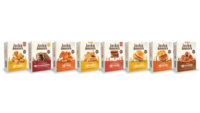Meat alternative, meat substitute, mock meat— whatever you want to call it, if imitation is the highest form of flattery, the burger is having its moment.
Some of the questions I field include those about safety, whether a retailer should carry it and the flavor profile (also, “why would anyone want to make a vegetable patty ‘bleed’?”).
To try to answer some of those questions, I spent the last several weeks trying different variations of the meatless burger.
I found that while some were totally unappetizing, others weren’t too bad. I found that if I tried them side by side with a regular meat item, the substitute inevitably tasted much worse than if I just had it as the sole item in my meal. I do have to say that I will buy some as we roll into the next summer cook-out season for my vegetarian friends.
I was surprised by the fact that while some of the burgers were pretty good, none of the sausage products I tried were even close to the real thing.
For the final test, I bought my office team burgers from a nearby fast-food restaurant. I bought both regular burgers and their meatless counterparts. I cut the burgers in half, so each person got a half of each, and then asked for their opinion. Our lone vegan wasn’t in the office that day, so only omnivores were present. The feedback was unanimous: Meat wins the taste test hands down. That said, everyone expressed a bit of shock at how good the meat substitute held up in terms of taste, texture, smell, appearance, etc. The conclusion: while it’s OK, why would you spend more on meat substitute when you could get the real thing? Of course, this was not a scientific study by any means, but it was fun!
As far as safety is concerned, it is like any food product. It must be made following acceptable food safety parameters, it must be handled throughout the supply chain appropriately, and it must be prepared appropriately. Ingredients are a whole different story. You need to read the ingredient list. In some cases it gets long, but when you look the ingredients up, they are safe. (At least in the products I tried.)
One thing that none of them address is calorie count. The products that tasted the best had similar or higher calorie counts than the meat items they were trying to imitate. One thing they are much lower in is cholesterol. They all came in at 0 grams.
The reason for the “bleeding” burger is straight forward: It enhances flavor and gives it a good mouth feel. As for the taste, I think a lot of work remains to be done. While a few companies seem to be making progress, most of the products I tried were very bland. Texture/mouth feel varied from “you almost fooled me” to “yep, they have beet juice in this thing.”
Would you use Appendix A for cooking times and temperatures, as you would for meat? The answer to this is no. These are not the same products. The manufacturers are responsible for determining preparation requirements necessary to make the product safe. Further, these products currently are produced under the jurisdiction of the Food and Drug Administration, so the requirements are different than a typical meat manufacturer must follow.
So, who is the potential market for these products? The estimated 4 million vegetarians in the United States, the estimated 15 million people with restricted cholesterol intake because of coronary heart disease and the estimated 6 million people in the U.S. who can’t consume red meat due to religious restrictions. That’s a lot of potential customers. In doing research for this column I was amazed at how many people said they hated going to lunch with coworkers because they couldn’t eat anything from a fast-food restaurant, and now they can.
So should you explore plant-based meat production? The meat industry does have an opportunity to step in and really provide value to these types of products. With the industry’s know-how for flavor profiles, innovative manufacturing, marketing and product development, I see these products being a better fit for meat and poultry producers than your standard product development teams.
A good example is flavor profiles. Go look at the snack stick segment. There are more flavors than you can count, and they sell. I am always amazed at the volume of snack sticks that move through retail stores. And that is the bottom line. If you have a customer who wants to buy high-quality products that taste good at a premium price point, why wouldn’t we want to offer them? At this very moment there are 25 million Americans who are walking by our products because they can’t or won’t eat them. Offer them something tasty they can eat and you just added another customer to your brand. NP






